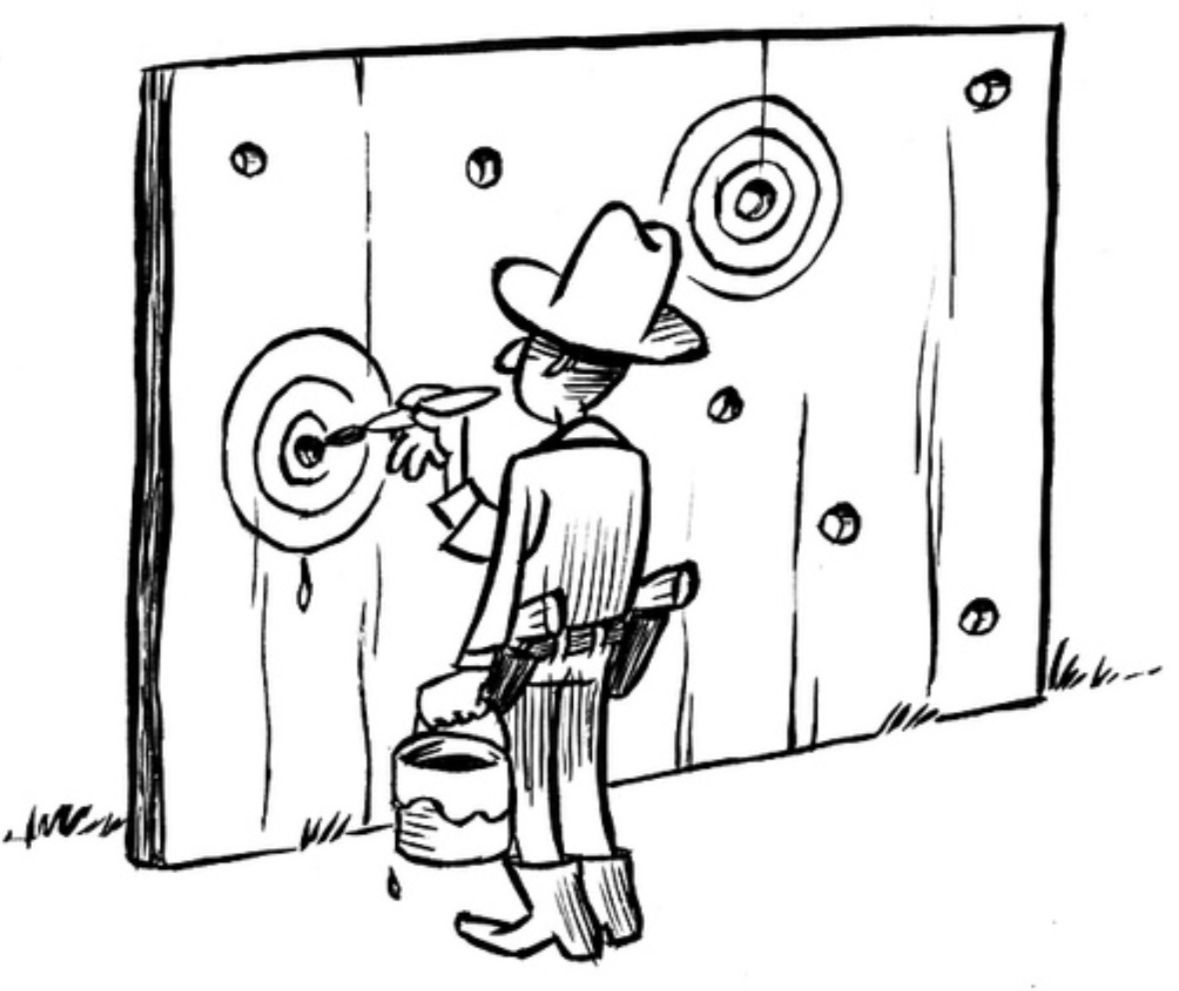The picture of the Texas sharpshooter is available in our artwork library (CC-BY). Artwork by Dirk-Jan Hoek, concept by Eric-Jan Wagenmakers.
In a 2018 blog post I mentioned that it is unclear who first came up with analogy of the Texas sharpshooter:
The infamous Texas sharpshooter fires randomly at a barn door and then paints the targets around the bullet holes, creating the false impression of being an excellent marksman. The sharpshooter symbolizes the dangers of post-hoc theorizing, that is, of finding your hypothesis in the data. The Texas sharpshooter is commonly introduced without a reference to its progenitor. (…)
A search for “arrow” instead of “sharpshooter” confirms that the anecdote may indeed be part of a much older oral tradition. Specifically, the relevant scenario is described in the book “The Essential Jewish Stories: God, Torah, Israel & Faith” by Rabbi Seymour Rossel. (…)
If you know more about the history of the Texas sharpshooter (or the archer version) please send me an Email. Until I learn differently, my vote for the earliest key reference on the Texas sharpshooter goes to John Venn (1866).
Just this week, more than six years later the original post, I received an email from Yaakov M. Shurkin, who informs me that the analogy has been attributed to Jacob ben Wolf Kranz (the Dubner Maggid, 1741-1804) in conversation with Elijah ben Solomon Zalman (“the genius from Vilnius”; 1720-1797). The Wikipedia entry on Kranz mentions the analogy explicitly:
The Dubner Maggid is famous for his fables or parables designed to teach or illustrate an instructive lessons based on Jewish tradition. The most famous fable of the Dubner Maggid is about the way in which he was able to find such fitting fables. When asked about this the Maggid replied: Once I was walking in the forest, and saw tree after tree with a target drawn on it, and at the center of each target an arrow. I then came upon a little boy with a bow in his hand. “Are you the one who shot all these arrows?”, I asked. “Yes!” he replied. “Then how did you always hit the center of the target?” I asked. “Simple,” said the boy: “First I shoot the arrow, then I draw the target.”
Yaakov informs me that Kranz and Zalman last met in 1796. He provides a link to a book in Hebrew that provides the relevant information (first printed: 1856, Page מד/87, Note קטז ).
So this information has updated my belief, and my vote for the earliest key reference on the Texas sharpshooter now goes to the Jacob ben Wolf Kranz in the late 18th century. Nevertheless, I remain convinced that the analogy must have been independently invented multiple times, and surely must have been known in antiquity…maybe I can give another update in 2030!
About The Author

Eric-Jan Wagenmakers
Eric-Jan (EJ) Wagenmakers is professor at the Psychological Methods Group at the University of Amsterdam.



